More Innovation:
6 Ways 5G is Improving Our Healthcare System
Updated: July 28, 2022
5G – An Opportunity to Improve Our Healthcare Industry
Our latest technology’s evolution has surpassed 4G network capabilities, limiting all industries’ improvement opportunities. As 5G continues to roll out, we will see the next leap in society, transforming all sectors for the better.
One particular industry that could see significant change through 5G is our healthcare system. Despite the recent discredited movements trying to spread fear on 5G deployments as a health concern, 5G can potentially change our well-being through eHealth.
5G is an opportunity to upgrade our current healthcare system into something much more reliable, accessible, and convenient for both our healthcare professionals and patients who rely on them.
Here are six ways 5G will support a better healthcare system and better health for all.
1. Home Healthcare and Telemedicine
Canadians are lucky to have free healthcare, but there’s also a significant drawback to it – the waiting times. Getting to see your doctor or specialist can be a long process, having you book your appointment weeks or even months in advance.
In Canada, specialist physicians reported a median waiting time of 20.9 weeks from a general practitioner’s referral to the completion of the treatment during 2019.
With advancements in modern technology and better management practices, we can now decrease these long wait times. Although it’s not the complete answer to the problem, telemedicine can help reduce it.
Telemedicine allows healthcare professionals to assess, diagnose, and treat patients from a distance using laptops, cell phones, and other wireless communication devices. With telemedicine, patients don’t have to go to their healthcare professional as much because healthcare specialists can make diagnoses and other specific treatments remotely. One popular way of providing telemedicine is through online video chat.
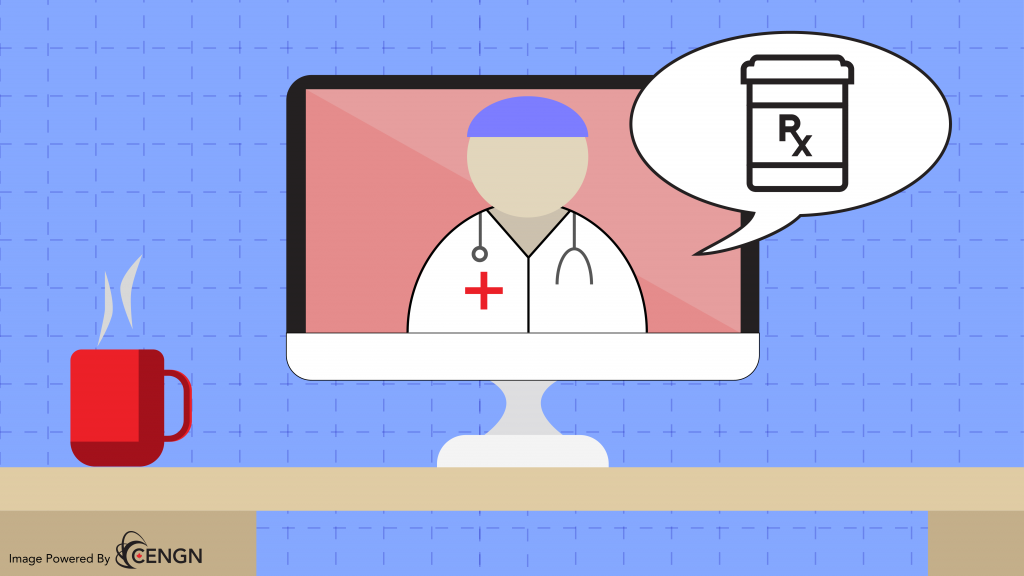
There are many benefits to telemedicine for patients, including:
• Reduced wait times
• No travel to the specialist (Major benefit to those in rural areas)
• Less time away from work
• Decreased chances of cross-exposure for patients
But there are benefits for healthcare professionals as well:
• Reduced costs
• Reduced no-shows and cancelled appointments
• Improved efficiency allowing professionals to see more patients
However, making telemedicine possible requires high-quality and real-time secured networks. Currently, telemedicine is subject to our wireless network’s limited capacity, reducing opportunities for patients and healthcare professionals.
With 5 G’s high bandwidth, low latency, and high data rates, telemedicine is becoming more accessible, easing the difficulties between professionals and patients.
2. Emergency Response Care
Emergency response care has played a significant part in our healthcare system, designed to provide care outside the traditional doctor’s office or regional hospital. This system provides patients with medical treatment when transported to your local hospital.
As 5G continues to roll out globally, EMTs are being provided with new gear and technologies to help patients in emergency response care.
For example, 5G will soon support body cameras on emergency responders and “5G Ambulances,” allowing them to communicate with specialized doctors in real-time. The doctors can then guide EMTs through procedures as they are transported to a hospital.
With a specialist’s help, general practitioners now have access to vast amounts of information, providing higher quality treatment to specific injuries not taught to a general EMT.
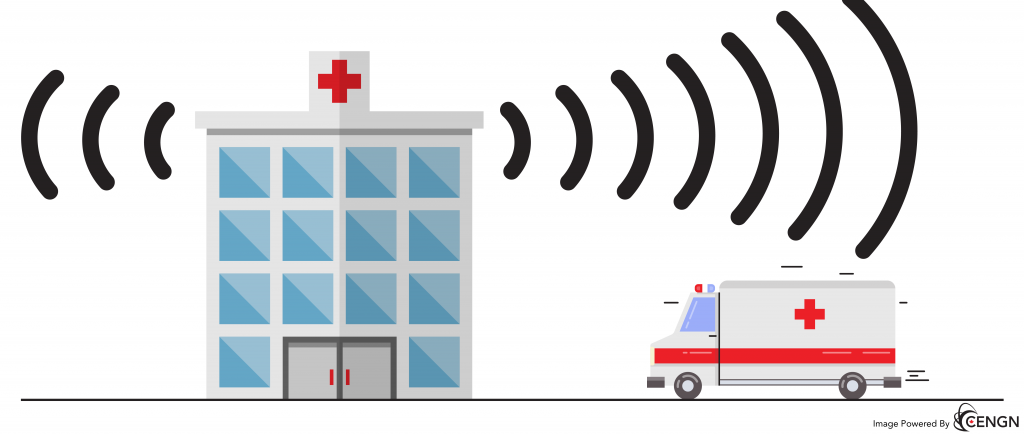
This is especially beneficial to EMTs and patients in rural areas where access to a local hospital could be a few hours away.
5G is necessary to make these high-bandwidth and low-latency 2-way videos possible.
3. Artificial Intelligence – Diagnosing and Treatment Planning
AI and machine learning are currently being used to diagnose and decide on the best treatments for patients. By automating health specialists’ tasks, patients have more accurate diagnoses and treatment plans than humans.
For example, AI is currently being used to identify various types of tumours in patients. An AI-built algorithm can accurately cut down misdiagnosis rates by analyzing more samples than a pathologist sees in their lifetime. In one study, an algorithm found that pathologists had misdiagnosed 12% of brain tumours.
Since AI requires large amounts of data for real-time learning, 5G’s large bandwidth and data transferring speeds are needed to support AI as a diagnosis and treatment tool.
4. Transmitting Large Data Files
Digital Imaging and Communications in Medicine (DICOM) files are standard formats for medical professionals to view, store, retrieve, and share medical images. Within DICOM files, patient information and images inform specialists about a patient’s current health.
However, the problem with DICOM files is the size and how long they take to transfer to a specialist. The average patient’s DICOM file is significant due to images such as MRIs or CT Scans within it.
For example, a single CT scan can take up to 35MB of storage.
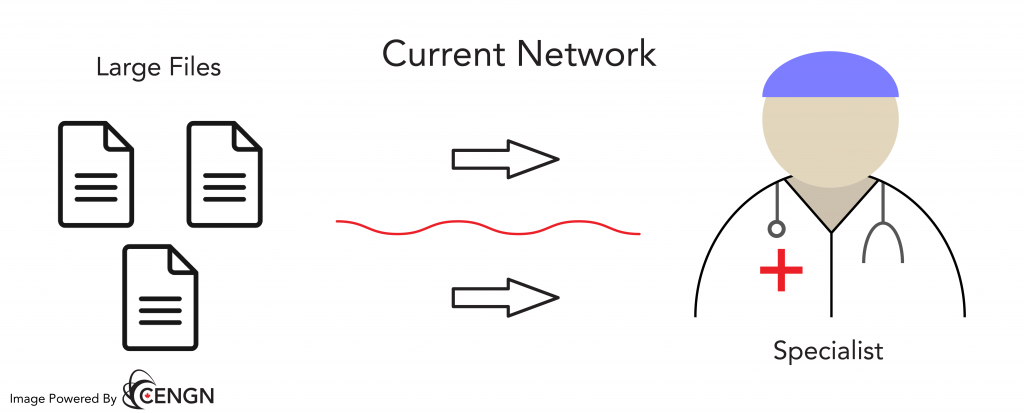
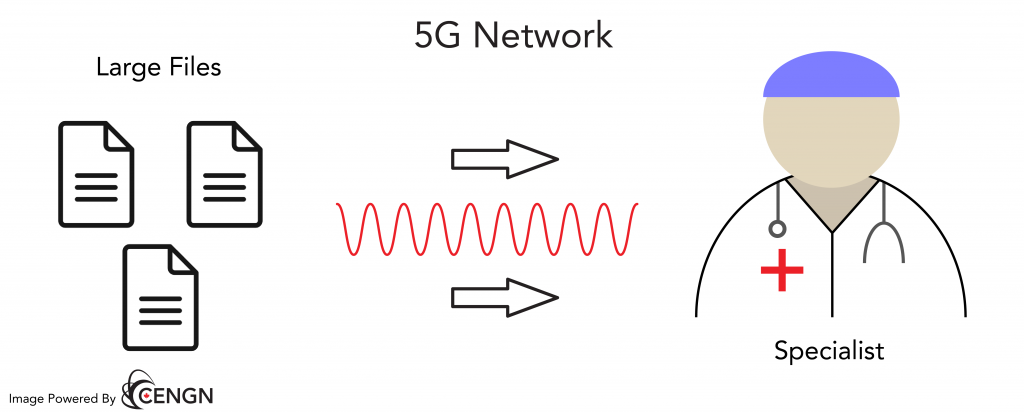
With 5 G’s high-speed network, health professionals don’t have to worry about an unsuccessful transfer and send files faster. This reduces wait time for treatments while increasing the number of patients that health professionals can see within a day.
5. Augmented and Virtual Reality for Rehab Therapy, Training, and Surgery
According to a recent study, VR/AR reduces patients’ acute pain and potentially chronic pain.
By being put into a completely different environment (fictional or not), healthcare professionals can distract patients from painful or anxiety-driven experiences. These experiences can range from something as small as getting a needle put into your arm to painful situations such as childbirth.
Using VR/AR, healthcare professionals can improve a patient’s health quicker, minimize their pain, and reduce their time in the hospital.
Doctors and medical students also use VR to simulate operations, allowing them to practice before surgery.
However, VR for hospital and therapeutic use is quite expensive today. With the current network technology available, VR is wired to ensure low latency, resulting in a fully immersive experience with no lagging. However, the lack of mobility (due to wired setup) doesn’t give patients a fully mobile experience. Because of the expensive wired setup, thousands of dollars are spent on high-grade PCs with the proper hardware to support virtual and augmented reality.
With 5G, VR and AR treatments will be wireless, allowing complete mobility and reduced hardware costs while maintaining the low latency and data transferring speeds needed.
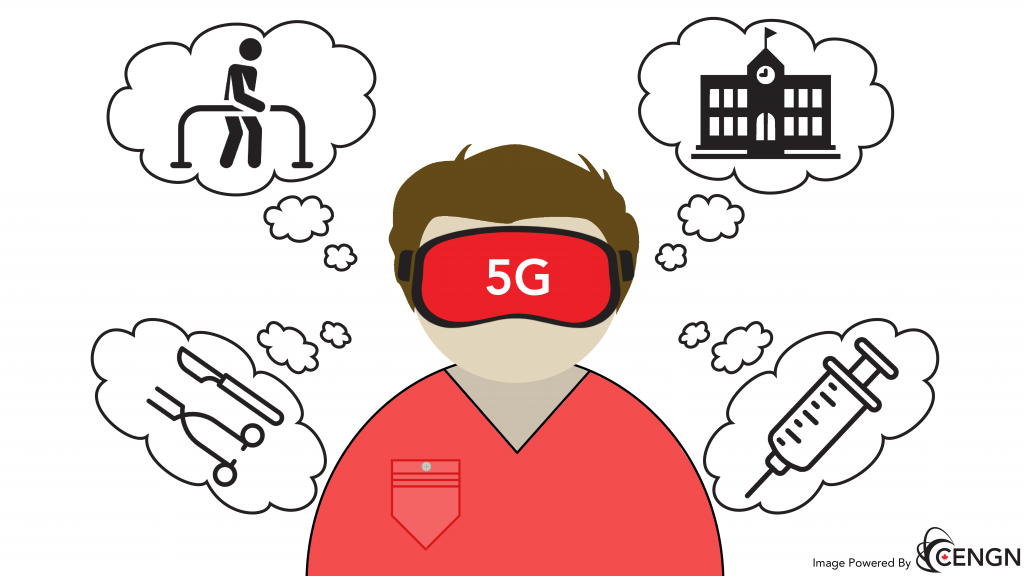
6. IoT Devices for Real-Time Health Monitoring
IoT health devices such as heart-rate monitors and fitness trackers have become quite popular over the past decade, giving us the ability to monitor our fitness, food intake, sleep and general health through our smartphones.
So, what would happen if our doctors could also use this information to track our health?
Well, it’s becoming quite possible.
Using similar IoT devices, you could soon send over general health data in real-time like average heart rate, blood pressure, body fat percentage, etc.
What’s more interesting is your doctor could also track and analyze numerous health conditions using IoT devices such as glucose monitoring, cancer treatment, asthma, clotting, and possibly depression.
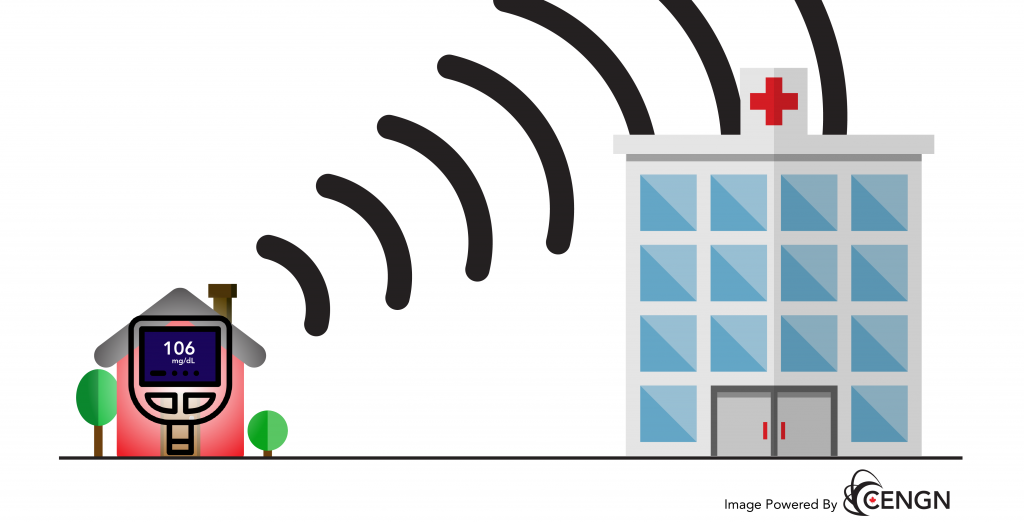
Because of this, you don’t have to go to your local hospital or clinic as much simply because you can send your health data from home. Your doctor now has accurate and up-to-date information and can give you a health diagnosis in real-time if needed.
Currently, this isn’t quite possible. Our modern 4G LTE networks cannot handle this amount of transmitted data due to its slower speeds and sometimes poor connection. For health professionals to monitor our health in real-time, 5 G’s high-speed and high-frequency network is needed to transfer this information reliably at low-data rates.
5G for a Stronger Healthcare System
As 5G rolls out, it’s almost impossible to foresee all the future opportunities available to the healthcare industry.
Innovators continue to identify and solve problems using 5G as a supportive network. They’re creating new tech solutions that will change how we do business and our quality of life. Harnessing the power of 5G will completely change how our healthcare system functions benefiting both our health professionals and patients in need.
As for right now, we’re only at the beginning.
Are you interested in hearing more about 5G and other innovative technologies?
Download our “Next Generation Network Imperative” Whitepaper to find out what the future of next-generation technologies looks like.
The International Data Corporation (IDC), a world-renowned global market intelligence firm, was commissioned to complete this study.









